A visit to Naples cannot but become a gastronomic tour: there are too many unique and incredible preparations that this city has to offer. A walk through the historic centre is enough to be literally overwhelmed by so many different scents: spectacular fried foods, sweet aromas of sugar and liquor, the smell of coffee in every corner of the city!
The shop windows full of delicacies are promises of moments of pure happiness. You have to give in! Below is a shortlist including 15 dishes to try before leaving Naples.
Explore Naples in total freedom with Naples Pass
What to eat in Naples: find out why to try everything

Sweet or savory, simple or complex, food in Naples is an institution and an important expression of the local culture that anyone visiting the city cannot help but know. It is not just for the flavors, which are intense, perfectly harmonized, or for the variety, so extraordinary that a complete list would be impossible to draw up. It is not even just for the raw materials, obviously all local like the aromatic plants that grow in the southern sun, the typical dairy products, or the Mediterranean fish.
Every typical dish of Naples contains a piece of the city's history, from the noble history of kings and queens, to the popular history of the streets and alleys. For this reason, a food tour of Naples is much more than an adventure for gourmands, it is a fun, tasty and alternative full immersion in the long history of this fascinating city.
15. Pizza: the queen of Naples' tables

Of all the typical Neapolitan dishes, pizza is undoubtedly the greatest classic, and it really needs no introduction. It is the most well-known and beloved expression of Neapolitan cuisine, its unmistakable aroma cheers up the elegant streets as much as the alleys of Naples, its rich and enveloping flavor makes everyone agree, and even pizza is a simple dish, made with few ingredients: water, flour, yeast and salt.
It seems that it has noble origins, however, this recipe that according to what is said was created by the cook Raffaele Esposito in 1889 to satisfy the desire for something different and special, expressed by Queen Margherita of Savoy. It is from the sovereign, that the Margherita pizza would in fact take its name. Actually, though, it's a known fact that pizza existed already in Naples, although with some variations in the recipe.
In any case, what makes Neapolitan pizza so special is certainly the workmanship of expert hands that pass down the technique from generation to generation. The art of Neapolitan pizza making is also a UNESCO intangible heritage. This is combined with a correct leavening of the dough, which thus becomes particularly light and digestible. The cooking, strictly in a wood oven, finally gives the pizza its unmistakable flavor. The rest is done by the ingredients used to prepare the seasoning, local and of quality, such as EVO oil, tomatoes, mozzarella, but also much more because one thing that is never lacking in Neapolitan cuisine is undoubtedly imagination, while respecting the most beloved traditions.
14. Sausages and broccoli rabe, the perfect combo
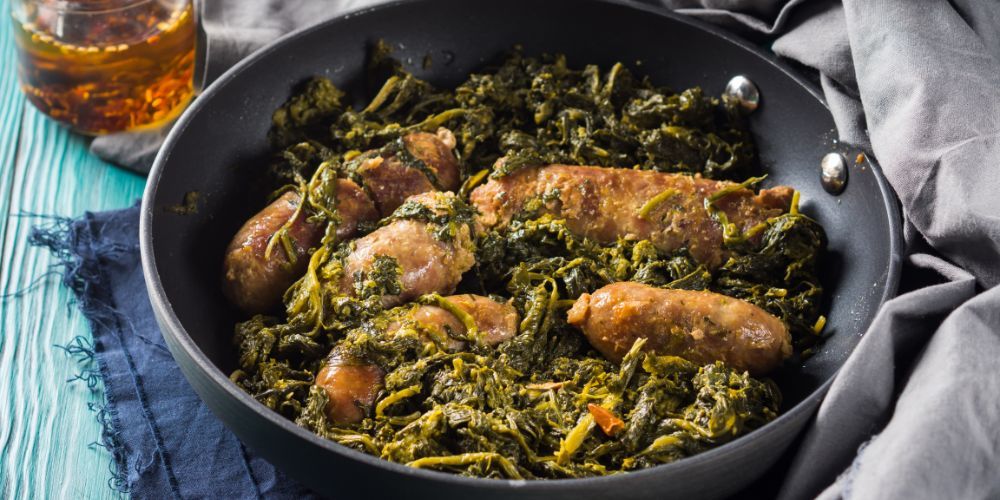
A second course with a side dish “incorporated”, sausages with friarielli guarantee a combination of flavors that is nothing short of spectacular. But what are friarielli? In Neapolitan tradition, they are nothing other than turnip tops that grew on the hills, on Vesuvius or in Vomero and that because of their slightly bitter taste were discarded by high-ranking chefs.
It seems that a street vendor, instead, having nothing to accompany his pork sausages, accidentally discovered that these vegetables, appropriately fried, are delicious to the point that, once the news spread, the women of the people began to fight over these “scraps” outside the king's kitchens, not without a certain vehemence. And the rest, as they say, is history.
13. Scarole pizza, not just at Christmas
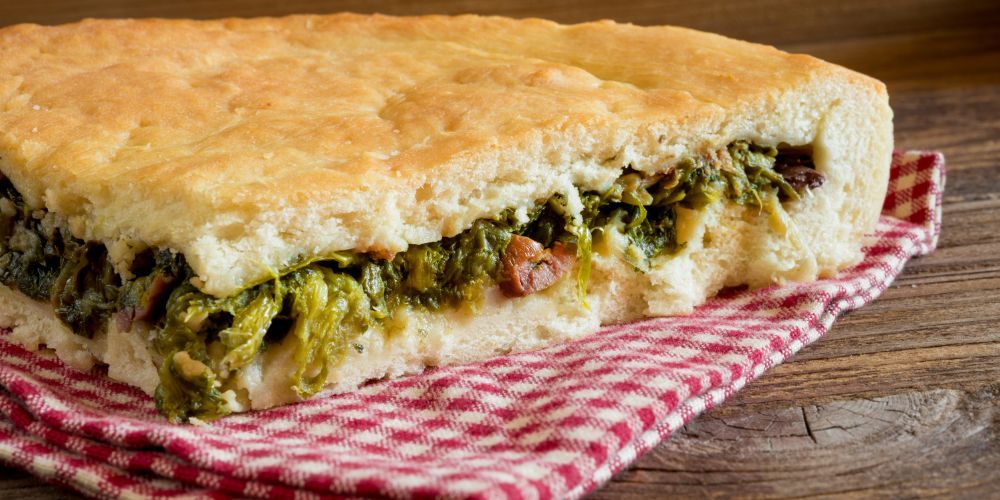
Another must-try of the Neapolitan culinary tradition, pizza di scarole is typically prepared during the Christmas period, when it is easy to find fresh scarole among the market stalls. But if this savory pie cannot be missing from the tables of Neapolitans during the holidays, its flavor is so essential that no one says no to a slice even at other times of the year.
The vegetables are also typically paired with black olives, capers, anchovies, pine nuts and raisins. The whole thing is then enclosed in a golden shell created with a very simple mixture of oil, flour and yeast.
Excellent hot, delicious even cold!
12. The Pastiera, a gift from the mermaid Partenope
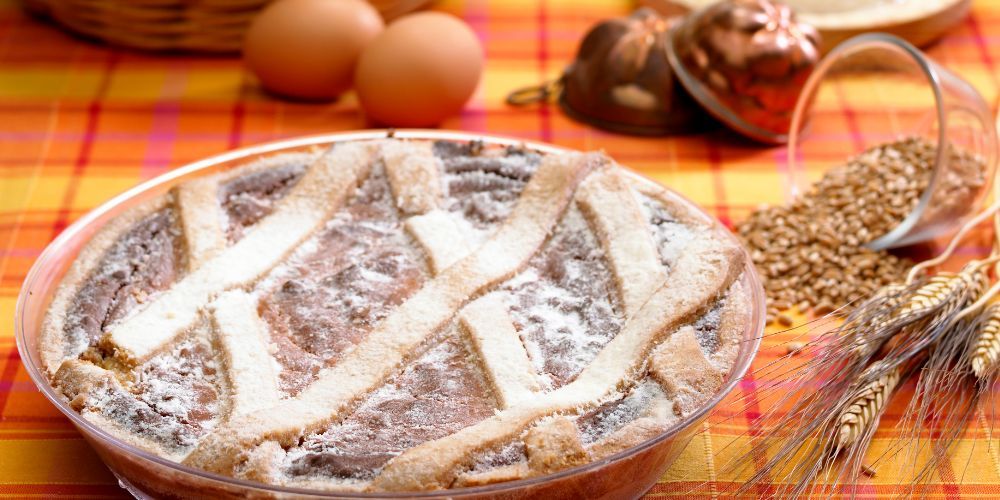
It is impossible to come to Naples and not taste even a slice of pastiera. The sweet cake whose scent heralds the arrival of spring, as it is typical of Easter, is made of shortcrust pastry filled with wheat, ricotta, milk, sugar, eggs, spices and aromas that give it an unmistakable floral scent. Some variations also allow custard and candied fruit.
It is one of the Neapolitan desserts par excellence, one of the most typical recipes of Naples, invented, according to legend, by the siren Partenope herself, from whom Naples took its first name. According to history, however, the dessert has its origins in pre-Christian traditions linked to the cult of spring. Today, however, in many families it is also prepared at Christmas, but restaurants and pastry shops have slices of pastiera on display all year round.
11. Pasta, potatoes and provola
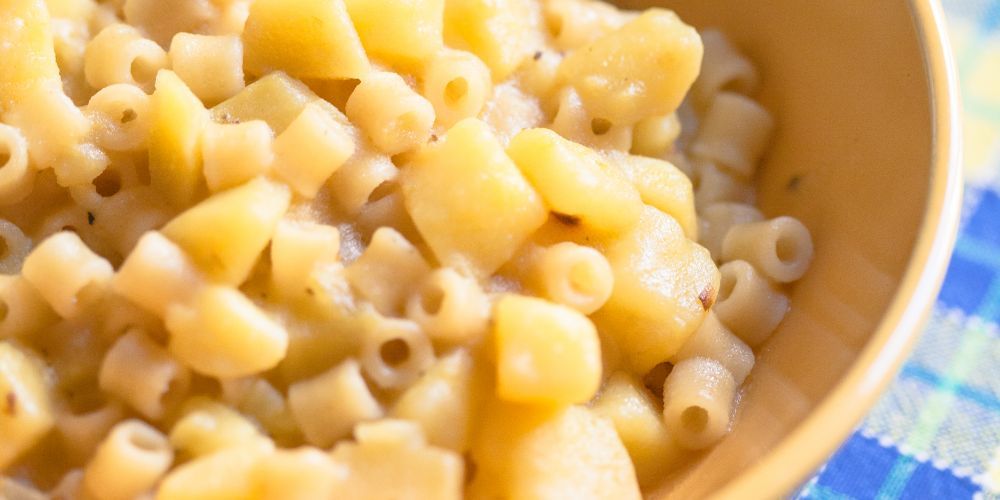
There is no house in Naples where this delicacy is not commonly prepared. Pasta with potatoes and provola is one of the most traditional dishes of Neapolitan cuisine, it is delicious, nutritious, easy to prepare; a traditional popular dish that in terms of taste and diffusion in the city of Naples has very few rivals.
Creamy and stringy, rich in flavor thanks also to the addition of parmesan rinds, everyone likes it.
10. Casatiello, a rich rustic donut
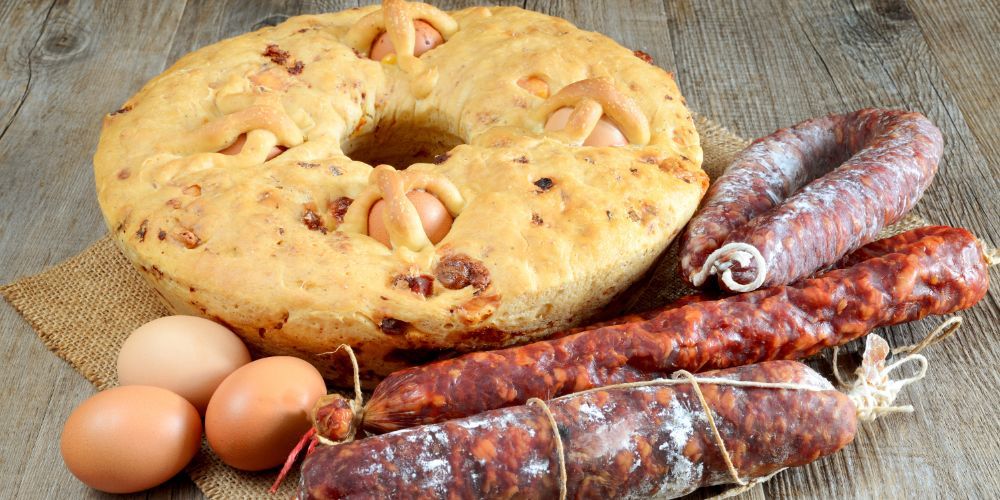
Another Easter tradition, like pastiera, but this time savory. Casatiello, also easy to find all year round, is a rustic donut prepared with flour and lard, stuffed with various cheeses and cured meats and eggs left whole as decoration.
It cannot be said that it is exactly a light dish, but its rich flavor is worth every single calorie and this tasty rustic also has a symbolic meaning. The pasta crosses that secure the eggs represent the cross of Christ, while the ring shape refers to the concept of resurrection.
The "luck" of casatiello, according to some, is also due to the fact that it is perfect as a packed lunch to take on the typical Easter Monday trip. In reality, just one bite is enough to understand why everyone goes crazy for it.
9. The “cuoppo” of land and sea
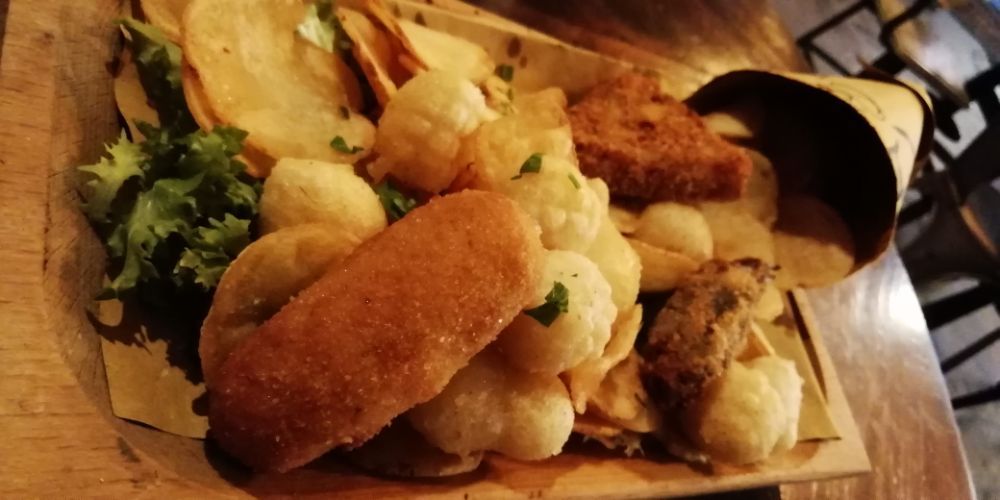
Neapolitan cuisine makes extensive use of frying, which, when done properly, is light without being less tasty. So among the typical dishes of Naples you can't miss the fried "cuoppo", a paper cone full of finger food delights. There is the seafood one, with shrimp, calamari, octopus, cod, anchovies and so on, and the land one, with small rice arancini, potato croquettes, courgette flowers, pasta crescente and much more.
It is commonly served in restaurants and trattorias but given its practical format it is particularly suitable as street food. Tasting all its delights while walking among the beauties of Naples is an experience not to be missed.
Join a street food tour in Naples7. Sfogliatella, a unique Neapolitan pastry
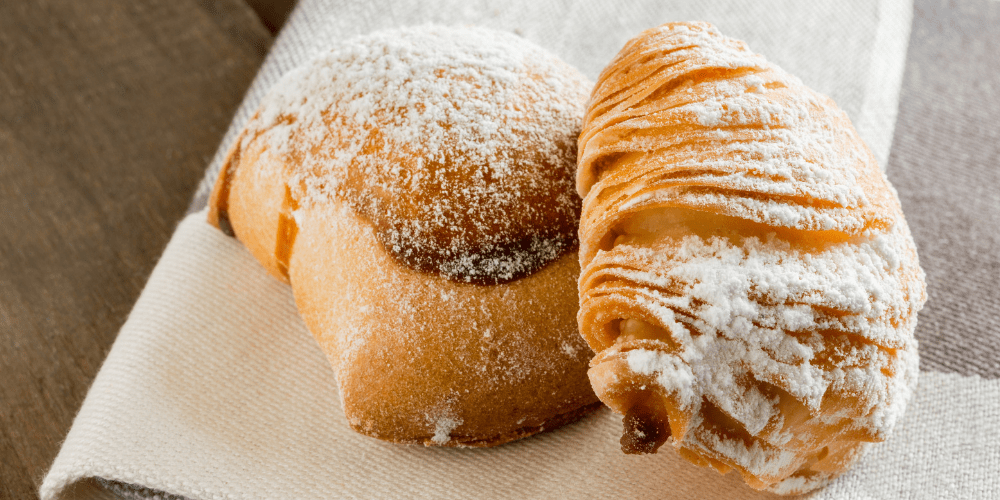
Every self-respecting Neapolitan has surely eaten so much sfogliatelle to lose count and continues being crazy about it. Needless to say, anyone who visits Naples cannot avoid tasting this spectacular dessert, whose origins date back to the 18th century.
Actually, the first sfogliatella was baked in the province of Salerno, in the conservatory of Santa Rosa da Lima in Conca dei Marini. Legend has it that the cake was born almost by chance, made with the leftovers of the convent: semolina dough, dried fruit, sugar and limoncello.
In order to obtain the sfogliatella that all Neapolitans know and love, it was necessary to steal the recipe. It seems that the pastry chef Pasquale Pintauro took possession of the secret recipe of the convent and, after making some changes, he decreed the birth of the typical Neapolitan sfogliatella.
The fact dates back to 1818 and included the filling still in use today: semolina, ricotta cheese, eggs, sugar, candied fruit and aromas. There are two different versions of sfogliatella: “riccia” (curly), which is made with puff pastry on the outside, and “frolla”, made with the short pastry, named precisely “pastafrolla” in Italian.
This division has created real schools of thought, affirming the superiority of one or the other version. There is no absolute truth about this, the suggestion is simply to try!
8. Gnocchi Sorrento style
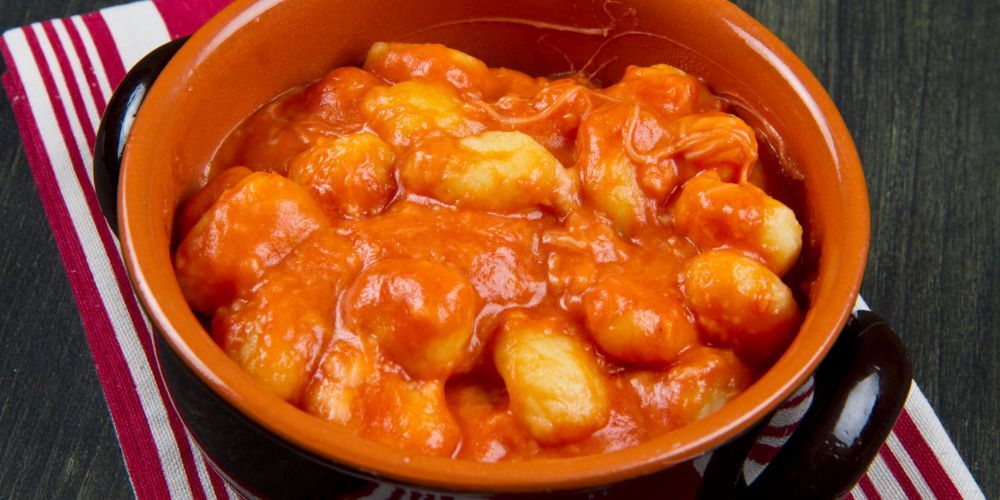
Gnocchi alla sorrentina are another traditional dish, based on a few, simple ingredients, but with an exquisite taste. They are certainly among the most exquisite typical dishes of Naples although, according to history, they were born in nearby Sorrento and precisely in Piazza Tasso.
In any case, these small pieces of flour and potatoes, which are often homemade given the ease of preparation, are then seasoned with a simple tomato sauce, mozzarella, basil and parmesan. If baked for a while before being served, the gnocchi will be enriched with a tasty crust thanks to the parmesan. In any case, they are a dish with guaranteed success, which even children love.
6. Babà, the perfect dessert

A dessert that is truly part of the Neapolitan imagination is undoubtedly babà, so much so that it has even become an adjective used to pay a compliment with sympathy to someone.
Also, babà is a cake born outside Naples and then reinvented to become an essential part of Campania's culinary tradition. The alleged inventor of baba is a Polish king, Stanislao Leszczynski. Then, various rounds of marriages and vicissitudes allowed the arrival of the recipe in Italy.
Here the preparation of baba has been perfected over time, and only expert pastry chefs master the secret technique of leavening this sweet delight. After the dough has been leavened for a long time in a particular mould that gives it that very recognizable mushroom shape, it is baked in the oven.
Once baked, the process which makes it so delicious is not yet complete, as it must be soaked with a solution made of sugar and rum, or limoncello. In the Neapolitan way, now it is "nu babbà"!
5. Macaroni omelette
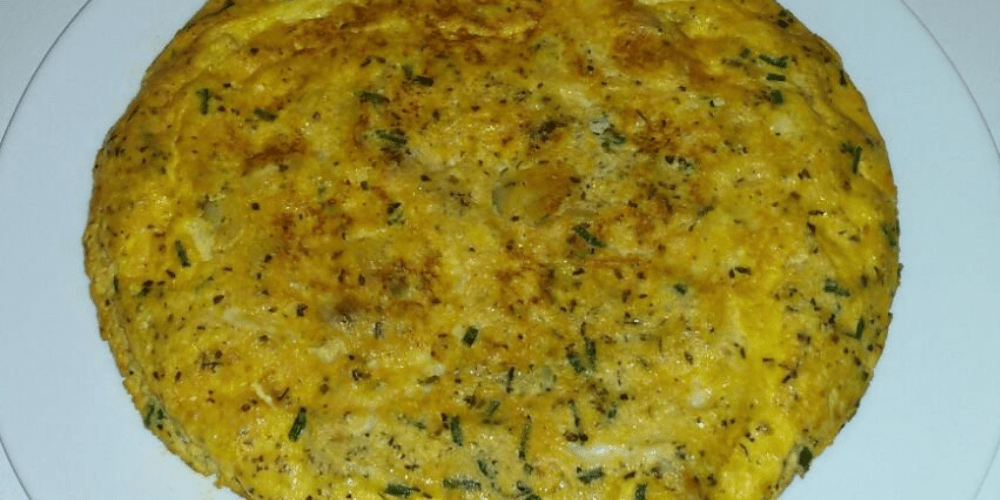
Macaroni omelette (Frittata di Maccheroni) is a poor dish created not to waste leftover pasta and make it tasty and nutritious with few ingredients. It is an ancient recipe; even the illustrious Goethe remembered it.
Over time, what has changed is the addition of so-called "luxurious" ingredients. The new components increased the variations of a dish that is already by no means light!
As the name suggests, it is therefore fried pasta, the legendary macaroni baked with eggs and cheese, to which pieces of cheese (provola, caciocavallo, scamorza) and cold meats such as ham or salami were later added.
Some variants include the use of tomato, whereas others make it smaller: the legendary frittatina, often served as an appetizer in pizzerias and fry shops and which has often decreed the fame of some restaurants preparing it in a workmanlike manner.
4. Potato Gattò

Potato “gattò” derives from the French word gâteau (meaning “cake”) and it is in fact the result of a splendid mixture of Neapolitan and French cooking, dating back to the end of the eighteenth century, at the time of Ferdinand I of Bourbon. It is said, in fact, that the first gâteau were prepared for Ferdinand's wife, Maria Carolina.
Gattò is a delicious savoury pie made of potatoes, to which are added eggs, mozzarella cheese, provola cheese, salami and ham. This soft timbale is then sprinkled with breadcrumbs and baked in the oven, thus creating that delicious crust creating the typical contrast between internal softness and external crunchiness.
Gattò is an extremely versatile dish, which can be eaten both as a single course and as a tasty second course. Cooled and cut into pieces, it can also be used as a fun appetizer or as part of a buffet. It's really impossible not to adore this incredible dish, simple and explosive at the same time!
3. Genovese, a speciality of Neapolitan cuisine
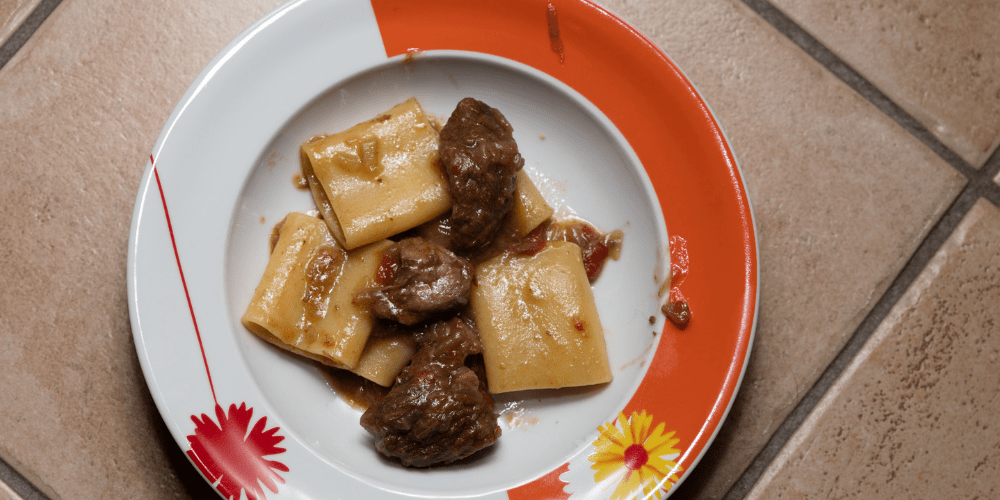
Genovese is a typical Neapolitan white sauce made with onions and beef, requiring very slow cooking. The typical pasta to be served with is ziti, broken by hand, or mezzane.
How come a sauce called "genovese" is one of the most important dishes of the Neapolitan tradition? Well, there are many legends about it. It seems that the most truthful one associates this sauce to the time when it was invented, which saw circulating in the city mercenaries from the canton of Geneva, from which derives the mispronunciation "genovese".
Other legends want this sauce to derive from the work of Genoese cooks operating at the port of Naples between the fourteenth and the fifteenth century. This rumour seems to be unfounded because, in Genoa, most people are not aware of the existence of this pasta.
Regardless of its origin, this delicious dish definitely deserves a taste: the slow cooking allows the onions to become a tasty cream with a unique flavour that Neapolitans love. In short, genovese is a must-try, unless you have an intolerance to onions!
2. Rice Sartù
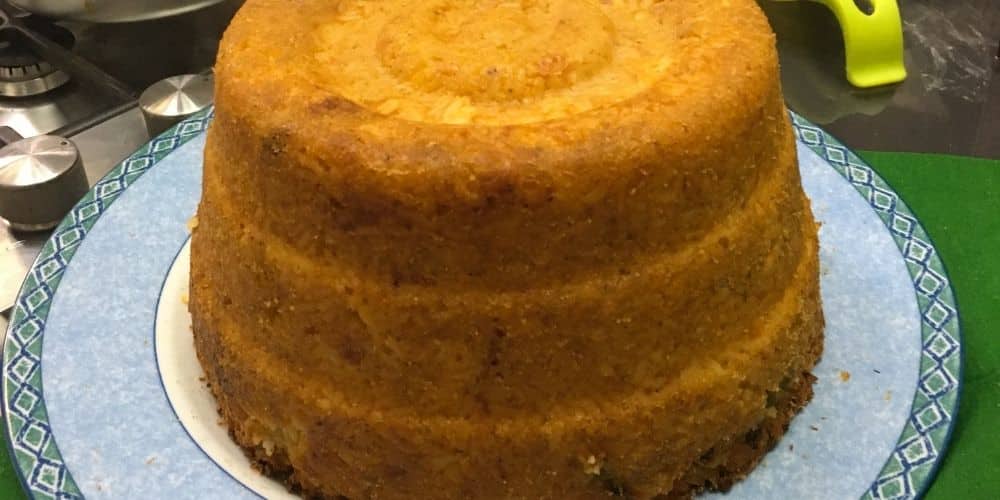
Rice sartù is a plate very connected to the Neapolitan capital city. In fact, it is peculiar for Neapolitans to have a dish made of rice, as the main ingredient of their first courses is almost always pasta!
According to legends, it would seem that even rice sartù was invented at the court of Ferdinand I of Bourbon, where the cooks, cunningly, tried to find a stratagem to make rice pleasing to the sovereign. So they created this delicious baked timbale, which, thanks to the use of breadcrumbs on the surface, allowed to hide the content.
The sartù can be white or red (obviously with the addition of tomato), but the procedure and the ingredients remain more or less the same. Sartù is also an excellent dish of recycling, as almost everything can be used to make it: peas, boiled eggs, meatballs, sausages, bacon, fiordilatte or provola.
Even the tomato seasoning is not just a simple sauce, being a delicious Neapolitan ragù! No one can remain indifferent in front of an excellent Neapolitan rice sartù, so the advice is definitely to try it.
1. Luciana octopus
Luciana octopus is the last recipe on this list, but certainly not the least! This is a typical Neapolitan preparation involving an octopus stewed in a casserole and seasoned with tomato sauce, capers and olives.
Once cooked, the procedure includes the addition of chopped parsley. The important thing is that, during cooking, water is not to be added at all: this rule also gave life to the famous Neapolitan saying," 'O purpo se coce dinto a ll'acqua soja" (octopus is cooked in its own water).
It is defined as Luciana style because of the district of Santa Lucia, the seaside village where the preparation was invented. Luciana octopus is a highly versatile recipe that can be used either as a first course, with spaghetti, or eaten as a second course.
Not to be underestimated is the possibility to make this dish a delicious appetizer, with the simple addition of croutons. There are only two adjectives to define this recipe: simple and taste!
About the author
Written on 05/01/2022


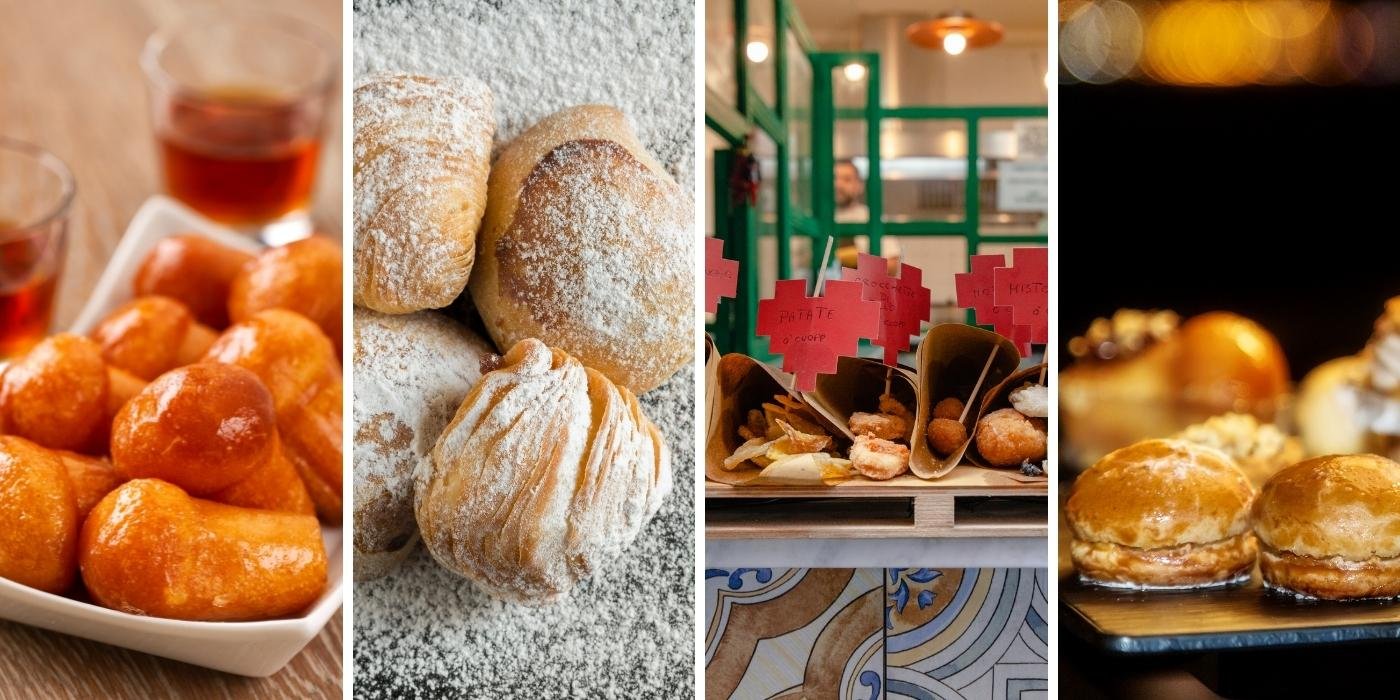
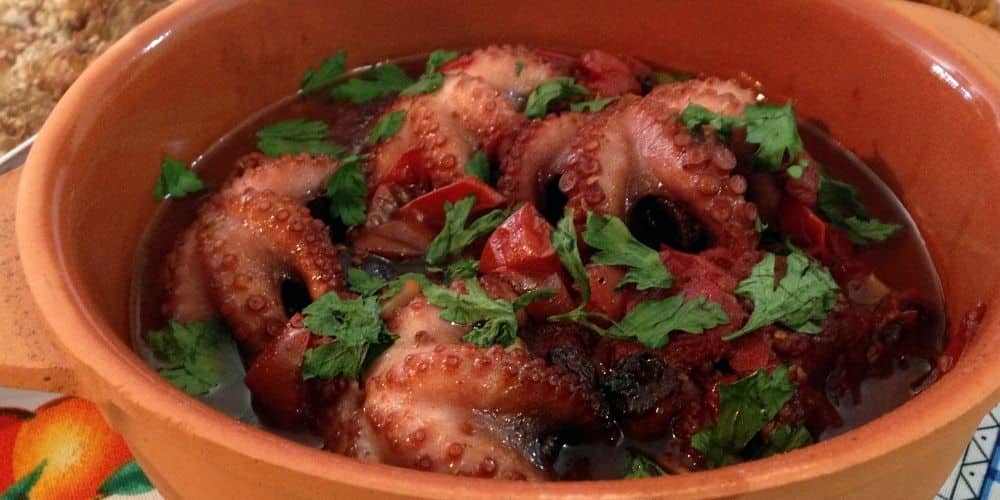

Chiara Spaziano
A journey to discover the most representative recipes of Neapolitan cuisine: 15 dishes you absolutely must try!